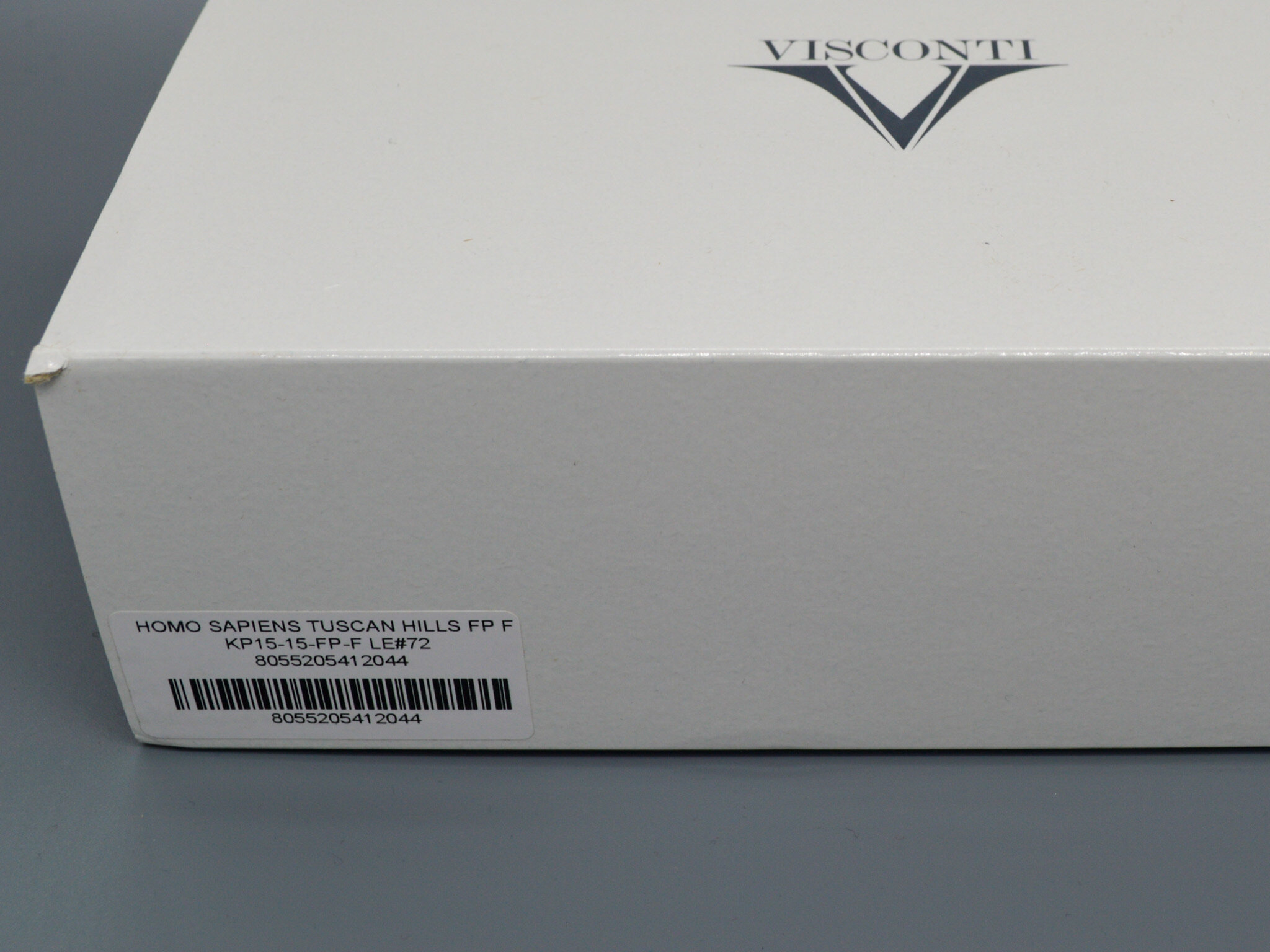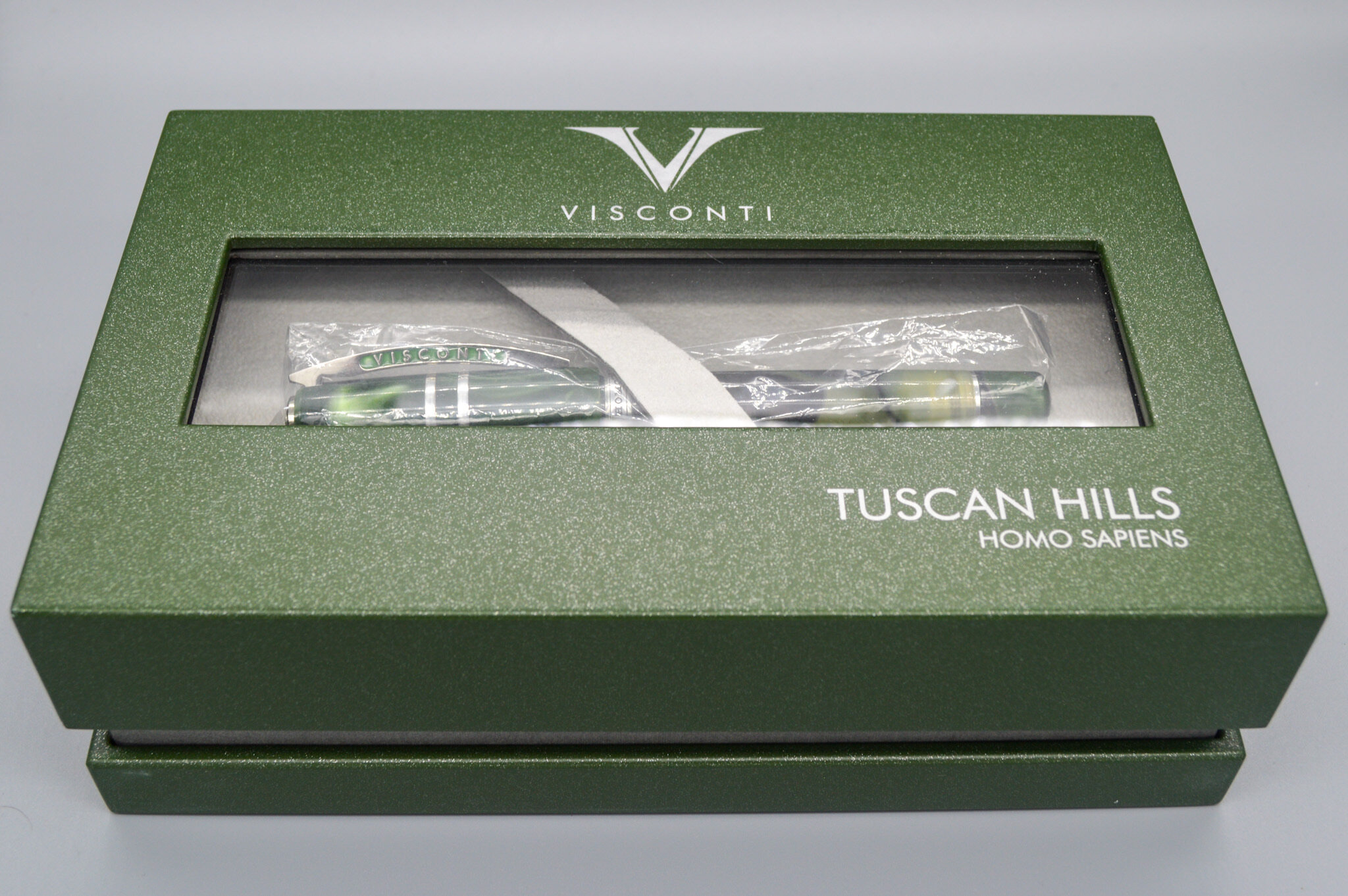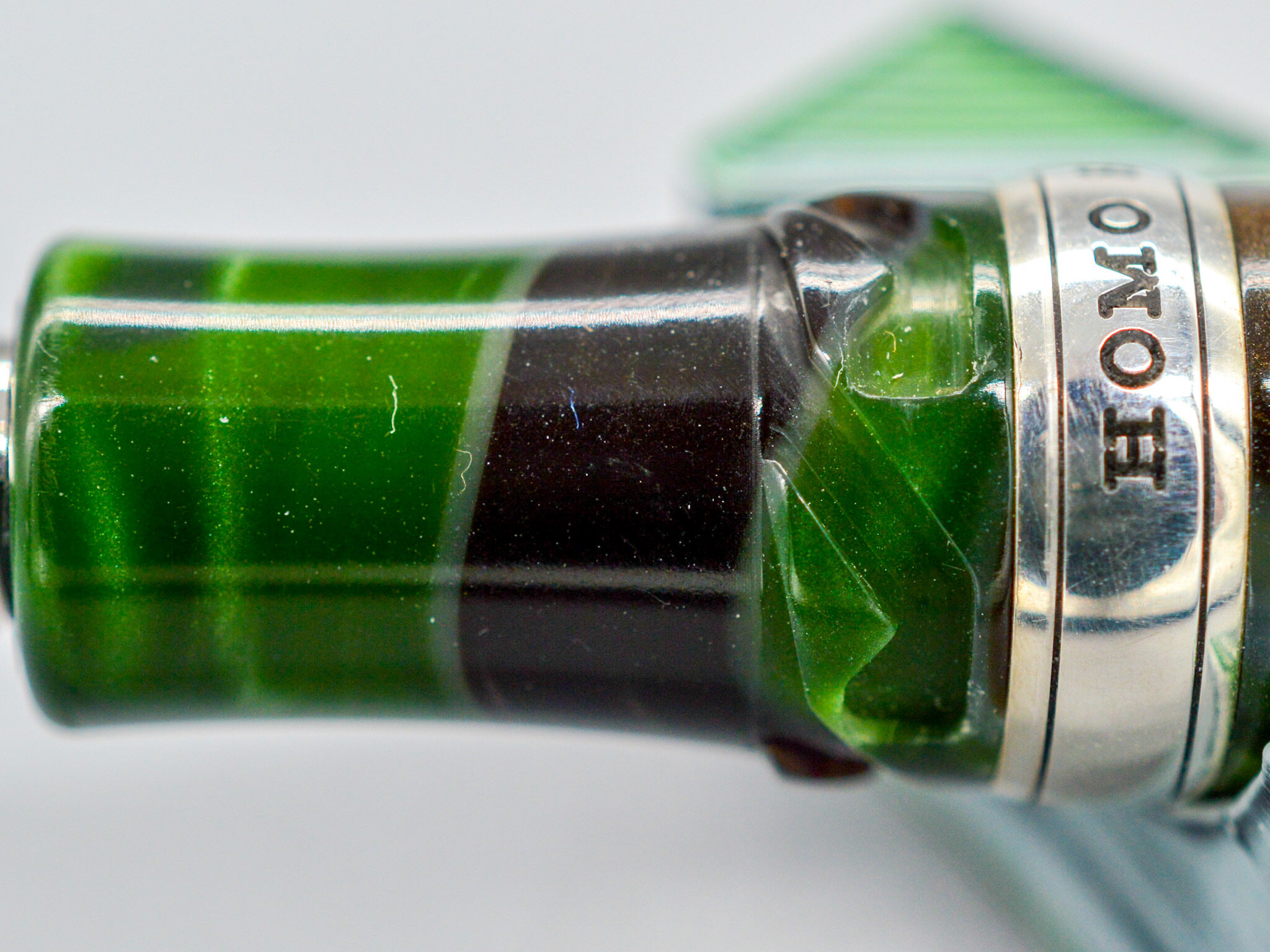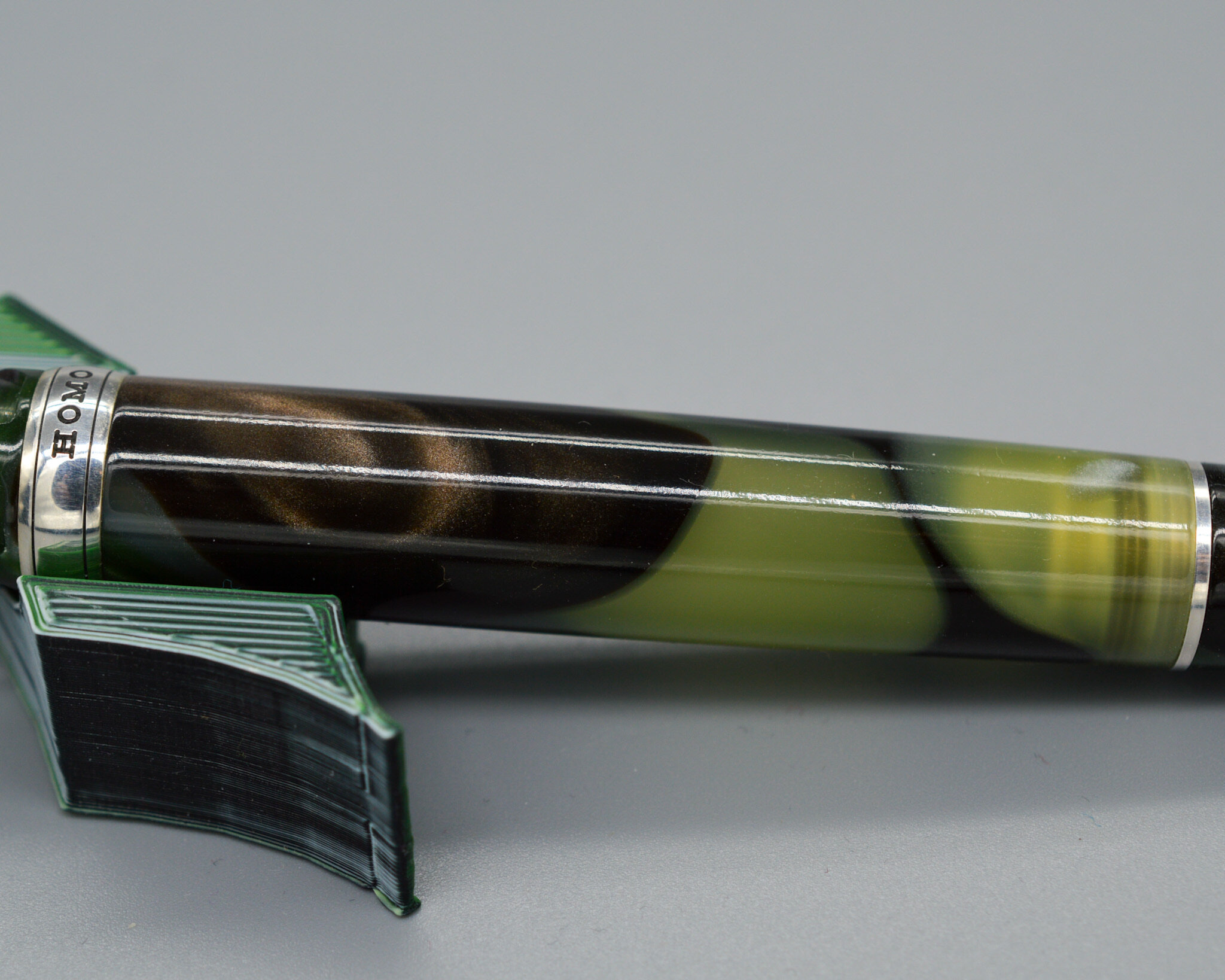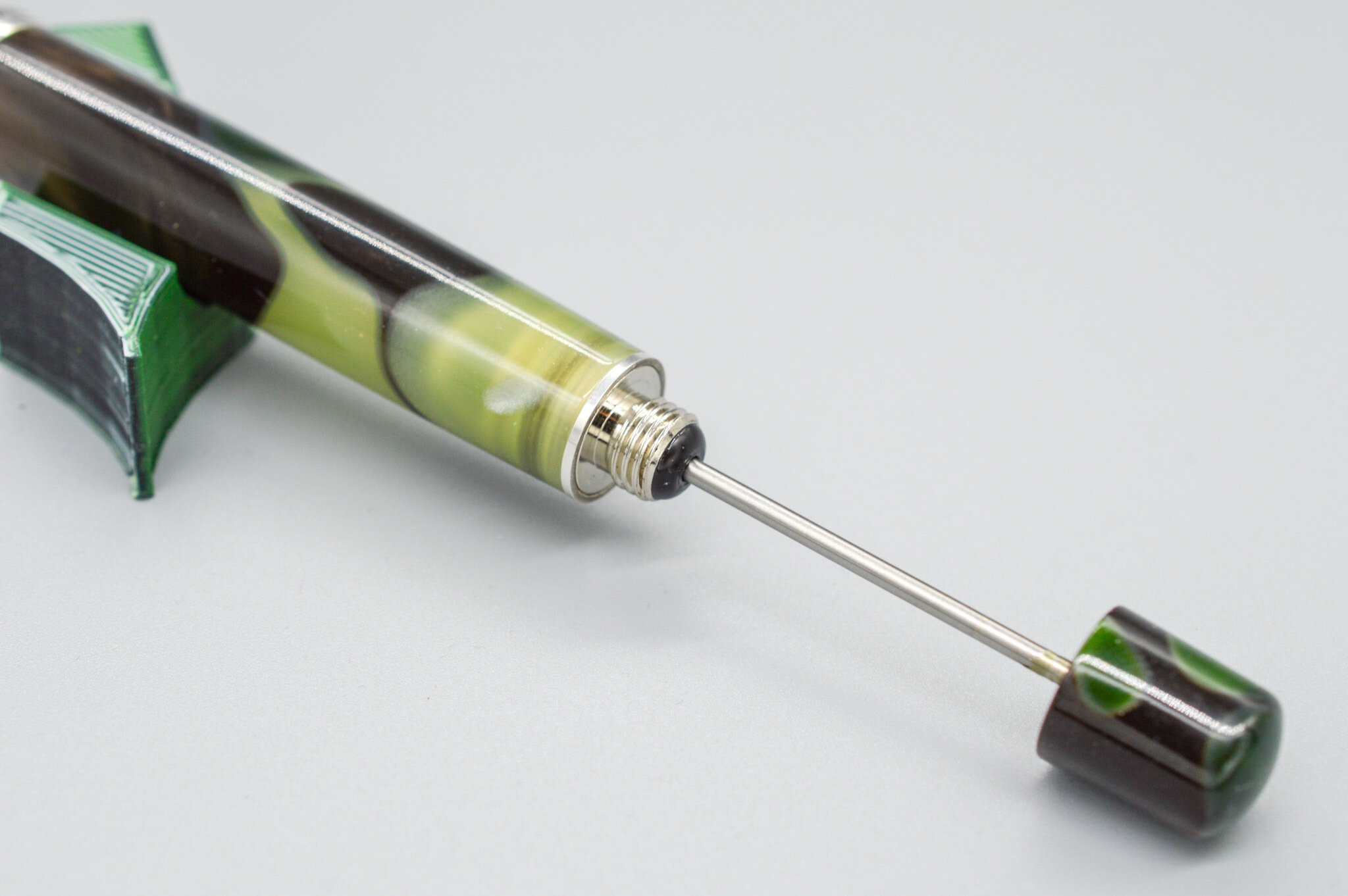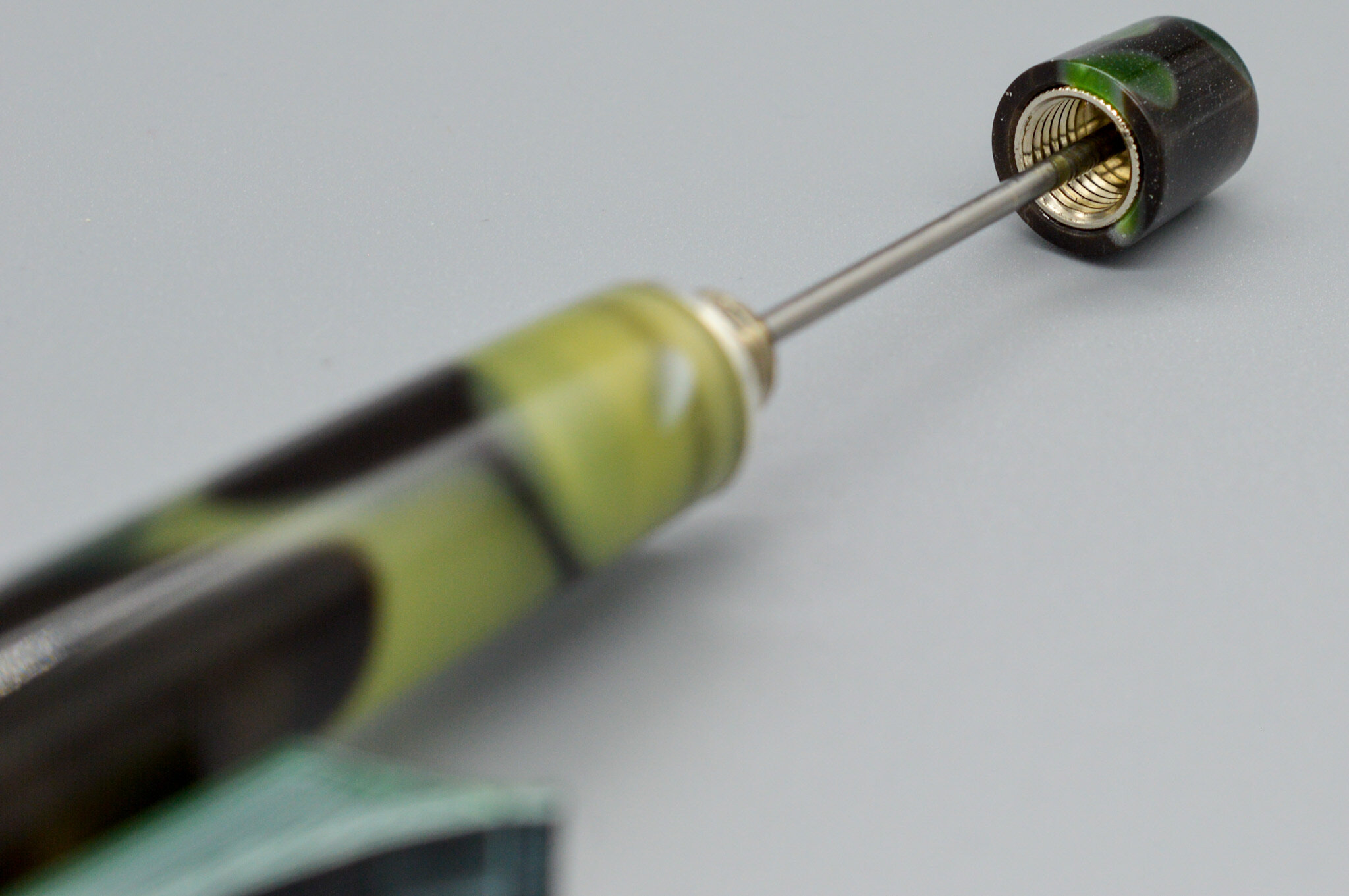Visiting The Visconti Homo Sapiens Tuscan Hills
I love a good special edition of an existing pen model. It’s fun to see how companies take their flagships, or even something out of their back catalogue, and re envision it to make it that extra bit special. Numbered editions have a particular place in my heart (limited or otherwise; honestly I don’t even mind an open numbered edition) because I just find it cool to see an acknowledgment on your pen itself that out of however many identical units produced, this is one is yours.
Some pens are easier to imagine as special editions than others, however. When your standard edition is a plain black or solid colored plastic or aluminum then introducing an exotic color or an interesting material is a departure from the norm. But when you’re Visconti and you produce a pen made from resin that is mixed with volcanic basalt rock, you have to make sure that your special edition is indeed special. The Visconti Homo Sapiens Tuscan Hills Limited Edition sets that tone right from the packaging.
The outer cardboard sleeve of the packaging looks much like any other similarly sized box from Visconti, but located by the barcode is an “LE” or Limited Edition number (the pen pictured was a sample pen sent to me on loan by Visconti’s US distributor Coles of London for the purpose of this review, so the number and nib size here do not actually match the pen, but one that you buy at retail should.) Under that outer sleeve, the Tuscan Hills box really departs from the norm, as you’re greeted by a beautiful heavy duty green box with a glass display window. The bottom of the box is felted to help it stay in place if you choose to keep it out on your desk or shelf as a display piece. And, of course, inside the box you have the pen itself and the warranty booklet.
The Limited Edition number of each pen is also featured directly on the barrel ring of the pen just below the section, where the Visconti Logo would be featured on a regular edition pen. This sample is un-numbered so it has a blank spot, but I’ve included a photograph below of where the number would be engraved so that you know where to look. The Tuscan Hills was produced as a limited edition of 888 fountain pens and 888 rollerballs. You can also see in this photo that unlike the traditional Homo Sapiens models, or even the Lava Colors models, this pen forgoes the volcanic resin for a swirled acrylic resin design. Let’s take a deeper look at that.
The material that Visconti chose for this pen is absolutely gorgeous. While it does not have any of the lava stone mixed in that the standard Homo Sapiens line is known for, this resin is instead a swirl of different shades of green and brown, meant to be reminiscent of the rolling hills and mountains of the region of Tuscany, Italy - Visconti’s home. Looking at this pen I see cypress trees and olive groves. I see summer hikes and shady spots to catch one’s breath. I also see some other earth tones that are maybe less reminiscent of Italy, but still tie the pen back to a naturalistic fee overall. Such as the brown swirl on the barrel of this particular pen, which puts me in mind of the pit of an avocado (which might have explained my ink choice a little later on.) I am admittedly not the biggest green fan, but these particular shades of green work very well together, and very well on this pen, and leave me convinced as well that if the Homo Sapiens Lava Colors standard line up is ever to expand, among the next colors should definitely be an earthy green and an earthy brown as both are so well suited here. Also worth noting is that the trim on this pen is sterling silver, just like the Divina Excellence, and the Tuscan Hills also makes use of Visconti’s bayonet style Hook-Safe capping mechanism.
Unlike the standard Homo Sapiens pens, which make use of a single reservoir power filler, the Tuscan Hills pen uses Visconti’s double reservoir power filler mechanism. What this means is that the pen has two separate but connected ink reservoirs. When the filling knob is screwed down the connection between these two reservoirs is sealed. At any time, however, the user can unscrew the knob to pour more ink from the larger backup reservoir into the smaller forward reservoir. This system allows for travelers to minimize ink burping and other leaking concerns by minimizing the amount of ink readily available to their pen, but also have a backup supply located conveniently inside of their barrel. Visconti tends to reserve this filling mechanism for special edition pens and models with some amount of translucency to in the barrel, so that users can see ink level. The Tuscan Hills is not a traditional crystal clear demonstrator model pen, but enough light shines through this acrylic to make this filling mechanism worthwhile (although I was not able to test filling this pen, as I was only dipping this limited edition for my writing sample.)
As I mentioned above, I dip tested this nib rather than filling the pen, but I have to say I was incredibly pleased with the performance of this EF nib. I’ve been on something of a broad nib kick lately, but after writing out the below sample I found myself contemplating inking up some of my other EF pens and reminding myself what I’ve been missing. Of course, as a western EF it’s not overly thin, so you can still see the ink color I chose to match the pen material. The nib itself is 18kt Gold, and plated in Palladium to match the silver trim of the pen. So far I have been very pleased with each of the new nibs I have tried from Visconti.
The Tuscan Hills retails for an MSRP of $1,195, although you can find it closer to $956 without having to hunt around too much. That price falls right in line with the rest of Visconti’s line-up. It’s definitely not a price where everyone can afford to run out and collect every color as Visconti releases new limited editions, but if you have a generous pen budget, or if you are looking to find an incredibly nice pen that comes in a beautiful shade of green, this is a pen worth having on your radar.
Thank you to Coles of London, Visconti’s US distributor, for lending me this pen for review.



